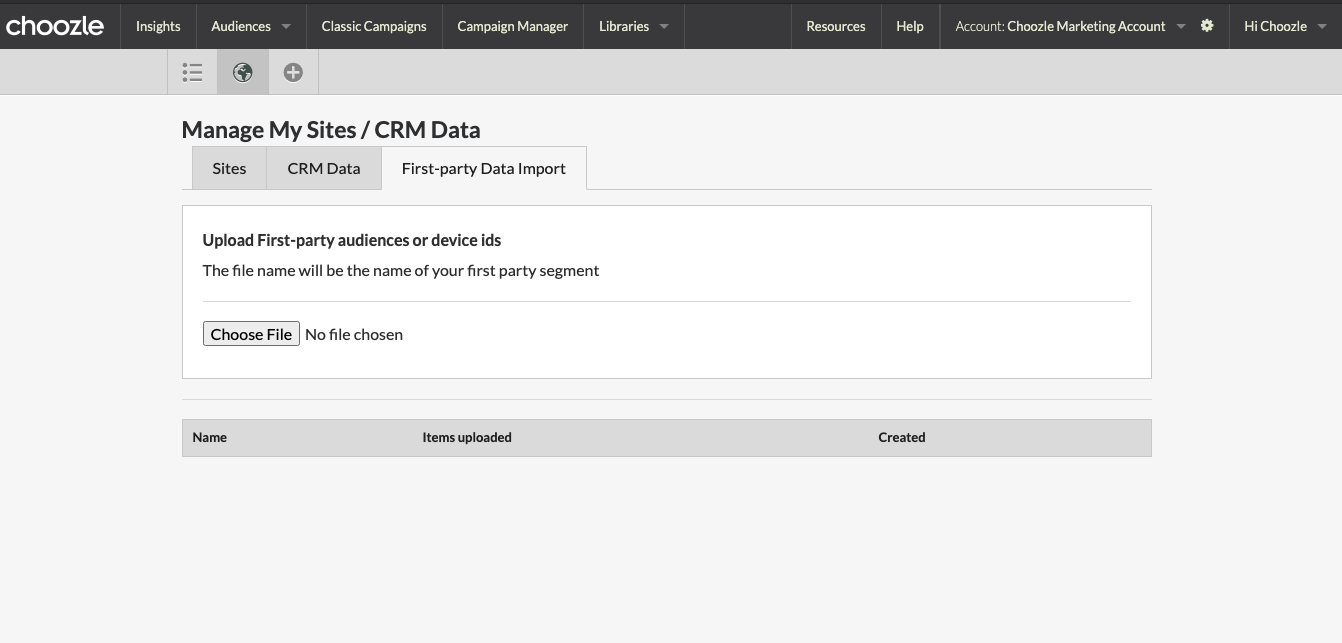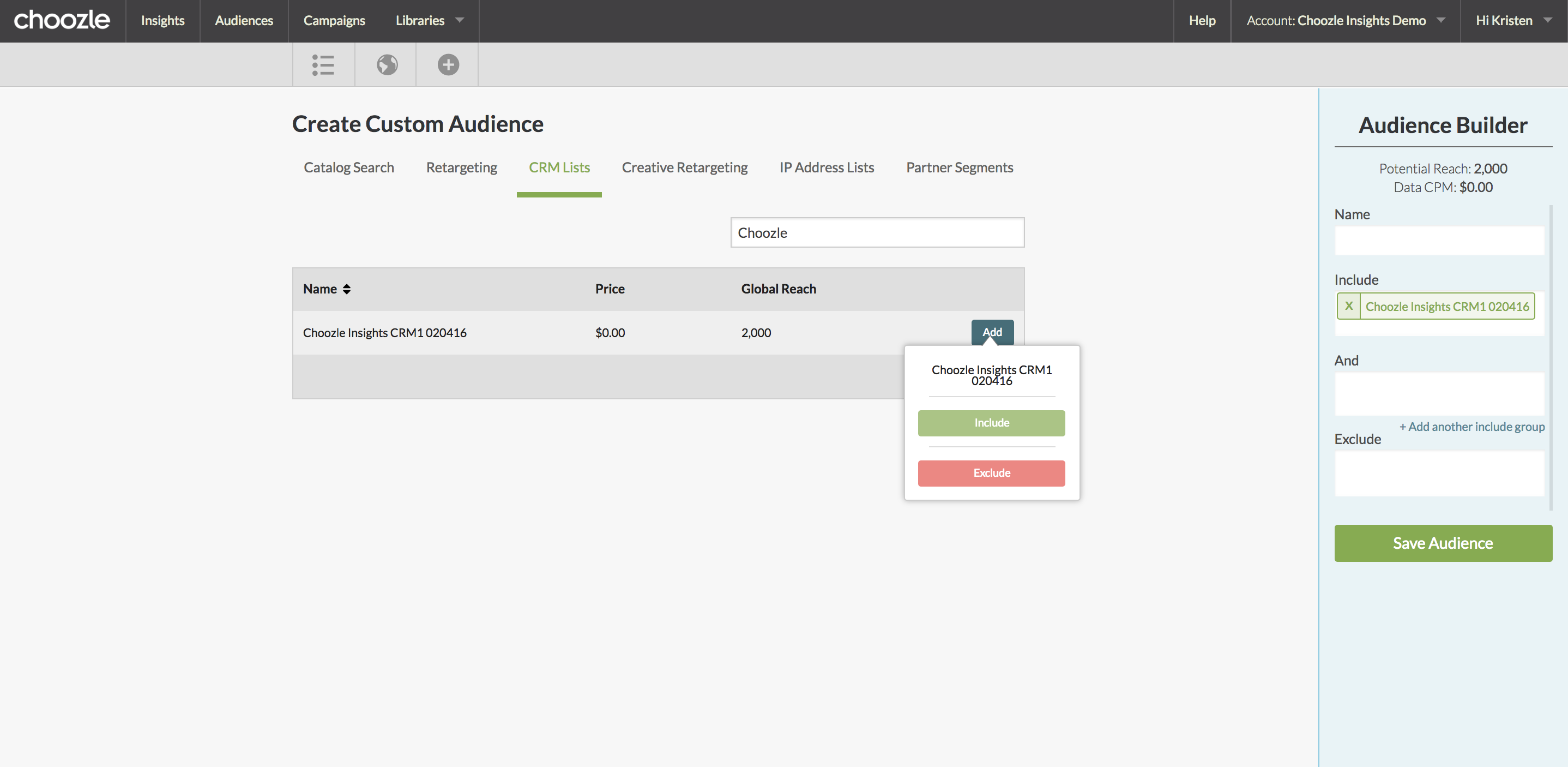GUIDE:
- Getting Started
- How Does Device ID Work
- Importing Device ID Data into Choozle
- Implementing Device ID Campaigns in Choozle
- Additional Resources
Getting Started
In a mobile-driven world, marketers must engage with mobile audiences more precisely. Device ID targeting gives marketers a better way to leverage their first-party data and deliver an increasingly reliable and robust audience than cookie-based targeting.
Device ID targeting allows you to activate onboarded data within a campaign to reach a highly targeted first-party audience with greater precision.
Choozle, in partnership with LiveRamp, processes CRM records using a deterministic matching model and leveraging a user database of over 1 billion devices and 250 million unique users. This results in a high degree of confidence that user profiles in your custom audience are the unique individuals in your device ID list.
Device ID Onboarding and targeting is a part of Choozle's Supported Solutions and can be implemented with the help of our Client Experience team.
How Does Device ID Work
A device ID (device identification) is a distinctive number associated with a smartphone or similar handheld device. Device IDs are separate from hardware serial numbers. Different mobile device types (Apple vs. Android) have different IDs, but all can universally be called, "Unique Device ID (UDID)".
- Apple - IDFA is abbreviated for the "identifier for advertisers," which is like the cookie profile of an iPhone, which enables an advertiser to understand that a user of a particular phone has taken an action like a click or an app install. It is a 40-digit sequence of letters and numbers.
- Android - Android device IDs are determined during the device's first boot. Users can access their devices' randomly generated Android IDs by downloading a free app from Google Play. These device identification numbers should remain constant for the lifetime of the device unless a factory reset is performed.
Unlike laptop and desktop devices, multiple users rarely share mobile devices. Most of the time, only the owner uses the mobile device. This means the tracked device usage for a device ID usually correlates to a single person. The resulting usage profile is likely to be more accurate than it is for a desktop computer with two or more people using it regularly.
Choozle only accepts software-based advertising device IDs, as these can be disabled and/or reset by the consumer.
Importing Device ID Data into Choozle
- Reach out to your account manager or client experience representative to inquire about device ID targeting. They will verify with our marketplace quality team that you have the required opt-out policies within your Privacy Policy to enable this function.
- Once enabled, Head to Manage My Sites by clicking on the globe icon in the sub-navigation bar of the Audiences tool.

- Create a text file (see example attached) of at least 2,000 device IDs
- Each row should represent one user device ID. Uploaded device IDs must be in the IDFA or AAID format which follows a pattern (ie - IDFA = EA7583CD-A667-48BC-B806-42ECB2B48606, AAID = cdda802e-fb9c-47ad-9866-0794d394c912). Encrypted or hashed device ID files cannot be accepted.
- Once the segment is generated, it will be considered first-party data and will not carry additional data CPM for usage.
By uploading data, you acknowledge you have the right to utilize the data and for this express purpose. You're also authorizing that you have explicit opt-in privileges to use these audiences and include any and all opt-out options within your website's privacy policy.
Implementing Device ID Campaigns in Choozle
- Once your Device ID list has been converted into a targetable segment of user profiles, the segment will live in the CRM Lists section of the Audiences tool.
- Click the desired segment and select "Include" or "Exclude" in the Audience Builder.
- Once the custom audience is complete, input a name for the custom audience and select Save Audience.

- Saved custom audiences can be applied in the Targeting section of the ad group setup.
Additional Resources
Overview Materials

